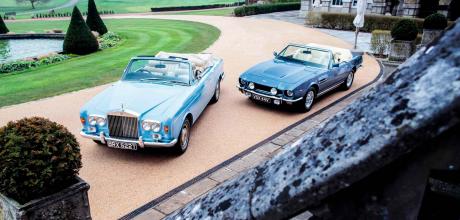Vintage car dreams come to life
It’s well worth exploring the rich automotive historywe have right on our doorstep
Museums are about preservation. They are physical spaces that hold fragments of the past and allow us to explore this history outside the classroom, books and the internet. Oddly, I associate museums with school. The word makes me think of the many outings across the Western Cape when I was growing up. As an adult, the joy of these experiences has not diminished.
The thing is, these exhibits are not confined to academic history, and preservation extends beyond mere records of world events. The importance of places like the Museum of Natural History is rather obvious and if you’re looking to find information on that in CAR, you’re in the wrong place. What I’m interested in is preserving automotive history, and how museums and collections allow us to do so. We are entering the future of motoring, born from the DNA of classic cars, and we owe it to the industry to revisit and understand the past.
We live in a world where we can take in any information we want without leaving our couches. Our laptops and smartphones have become our sources of information. We can research whatever topic interests us and, quite literally, enjoy virtual tours of the globe.
The thing about motoring, though, is that passion stems from experience; grinding gears, appreciating the architecture of the machines, smelling the leather finishes and inspecting an engine in person.
When it comes to cars and revisiting their story, I want a ticket to see these artefacts in the flesh.To take in a car is to also think of the lives it’s lived, the places it has been and the owners who have travelled in it. Seeing these cars in person actualises an experiential history in a way that simply reading about them does not. An aside here, the virtual car museums were an incredible escape during the lockdowns, and the 360° views we were allowed through the online forums of Mercedes-Benz, Mazda, Porsche, Ferrari and Lamborghini were a welcome source of entertainment.
But there’s nothing like the real thing … In the Western Cape, we are fortunate to have a couple of these galleries. A particular highlight was visiting the ABRU Motor Studio at Lourensford. Owned by Cobus Kellermann, it was where I reunited with the Ferrari Testarossa, the childhood favourite I wrote about not too long ago.
Then, I can’t write about collections in Cape Town without making mention of the Franschhoek Motor Museum, which houses some of the most spectacular cars in the country. If you are an enthusiast, you must hit the N1 and absorb the comprehensive collection of cars and history it holds. While on the N1 to Paarl, be sure to look to your left, because you will spot the shell of an old aeroplane. This marks the home of Wynland Auto Museum. It’s a great spot with a lot of interesting pieces, and the setup and location are very cool.
Another educational visit is the James Hall Museum of Transport, which houses some of the last trams. It even has animal drawn vehicles dating back to the 1870s.
Again, this speaks to the storytelling ability unique to archives such as these, where you are given visual and material insight into times past. In the context of motoring, exploring the development of transport from as far back as animal-drawn vehicles gives us an even greater appreciation of the metallic beasts we drive today.
But these modern vehicles are rapidly housing electric motors and as we move towards an eco-friendly future, preserving the petrol vehicles the have defined modern transport up to this point becomes crucial. It is crazy to consider that just a couple of generations in the future, children will look at some iconic engines the same way we think of steam engines, as something of the distant past.
We are so fortunate to have some of the best collections here in SA; the onus is on us to get out there and explore.


